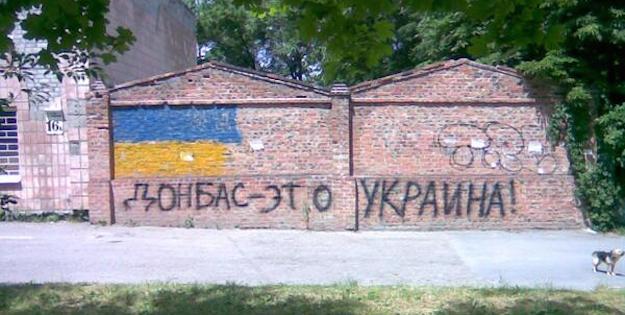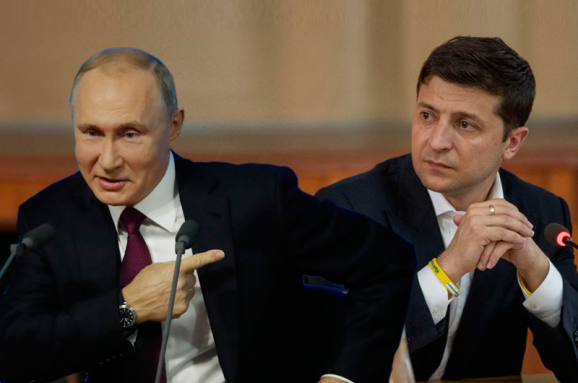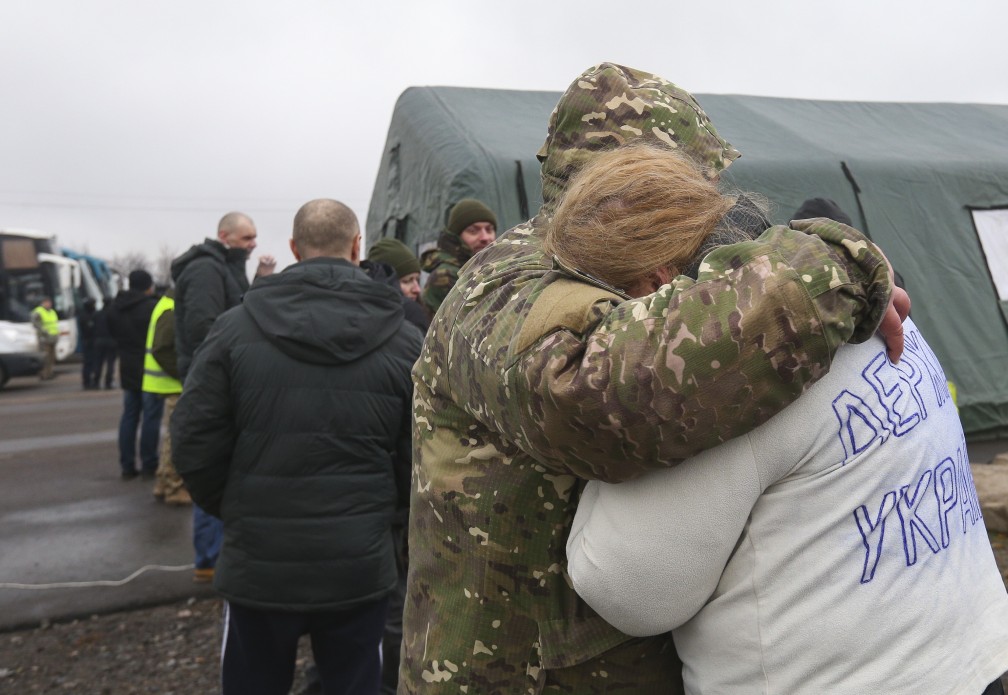On 25 June 2020, The Vienna Institute for International Economic Studies (wiiw) presented online its study on the costs of reconstructing the Donbas region, which has been decimated by six years of war. It draws lessons from other conflict regions in the world and outlines a reconstruction plan for the region.
The wiiw study was prepared by Peter Havlik, Senior Research Associate in wiiw, Artem Kochnev, PhD student at Johannes Kepler University, and Olga Pindyuk, wiiw Country Expert on Ukraine.
According to wiiw, it will take at least $21.7 billion to restore Donbas, which equals ⅓ of the Ukrainian yearly state budget. This sum is insurmountable for Ukraine, which means that even if the war ends and Ukraine regains control of the region currently controlled by Russian proxies, this would trigger heavy problems both economic and humanitarian, to integrate the region back to the country. In particular, as the wiiw study claims, the heaviest and most expensive part of the reconstruction would be not just to rebuild some factories but to reestablish economic links between the region and the rest of Ukraine as well as to overcome the effects of six-year-long Russian and occupation propaganda in the region.
With over 13,000 dead (including over 3,000 civilians) and up to 30,000 wounded (including 7,000 civilians), the Donbas war in Ukraine is Europe’s bloodiest conflict since the end of the war in former Yugoslavia. The Kremlin's support for Donbas separatists through biased media reporting, supply of arms, and military manpower was instrumental to transform public discontent into an armed insurgency in Donbas. Yet, external support of insurgents is a widespread feature of contemporary conflicts. This is reflected in a growing number of internationalised internal conflicts – initially internal conflicts that de-facto become interstate wars.

Economies of the occupied areas have dropped by more than 50% in 2014-15 and have recovered only slightly. They exist thanks to subsidies from Russia
If the current crisis develops into a prolonged recession, Russian fiscal stability could be called into question. If the global economic downturn lasts longer than a year, the Kremlin will have to decide whether the expensive support of the satellite states is worth the political gains. As the rapid dissolution of the Eastern bloc in the late 1980s showed, changes in that respect might occur quickly.
Citing Ukrainian governmental sources, the wiiw study writes that currently [highlight]Russia spends about $6 billion annually to support the occupied areas of Donetsk and Luhansk oblasts,[/highlight] or the “Donetsk and Luhansk People’s Republics” (“DNR” and “LNR”). This makes for some 0.3% of Russia’s overall GDP in 2019.
Half of this amount was estimated to support military forces, while the other half presumably financed public expenditures and purchase of energy goods.
Russia supplies gas and electricity
to the ORDLO (occupied areas of Donetsk and Luhansk oblasts) for free. Furthermore, Russia provides a simplified procedure to apply for Russian citizenship for Ukrainian citizens living in Donetsk and Luhansk oblasts. Although this procedure is typically regarded as a political move to strengthen Russia’s diplomatic position in its negotiations with Ukraine, it contains a humanitarian component as well. Russian citizenship makes ORDLO civilians potentially eligible for pensions, unemployment benefits, and healthcare services provided by Russia.

In 2015, the average wage fell by 77% in the “DNR” and by 82% in the “LNR.” The mass contraction was followed by subsequent growth. However, as the graph below shows, the difference between wages in the government-controlled territories and ORDLO increases year by year.
While in 2019-2020 wages in the eastern Ukraine have almost returned to the pre-war level, in occupied areas they’re far from that level.

The data of recruiting websites in Donetsk oblast show that the monthly median wage of the job positions on offer in the ORDLO was $158, which is roughly half the median wage offer in the government-controlled territories ($316) and only a third of the pre-war level.
The trade deficit of the ORDLO proves further that it is economically insolvent without Russian support. In particular, according to an investigation based on customs data and accounting documents of the railway operators in Russia, the import of goods to the ORDLO was equal to $1.2 billion and exceeded the export volume in bilateral trade with Russia by a factor of 6. Natural gas (41%), food (22%), and other fossil fuels (11%) comprised the largest share of ORDLO imports.
After the withdrawal of operations by Ukrainian banks in 2014, the banking system of the ORDLO became very rudimentary.
Currently, the banking sector of each region consists of a single state-owned bank, which provides financial services and is responsible for financial regulation together with the separatists’ “ministries of finance.” The banking sector offered no credit products to either individuals or enterprises until early 2019.
In general, the economy of ORDLO is developing in the framework of state capitalism with weak competition and a few huge monopolies running the economy.
Wiiw’s study claims that in the context of the current economic crisis caused by the lockdown, the alternative costs to support the ORDLO proxy republics will rise for Russia. Therefore, [highlight]the possibility of changes in Russian foreign policy regarding Ukraine and ORDLO in particular becomes more likely. [/highlight]
Estimated lower end of Donbas reconstruction costs amounts to $21.7 billion

The lower end of projected Donbas reconstruction costs is at $21.7 billion. Source: wiiw estimations.
Trending Now
Physical capital. The total capital losses incurred over the period 2014-2019 in Donbas amount to $9.5 billion, which is equivalent to 14% of the pre-war capital stock in the region (see the figure below). Of this value, the share of damage caused by the hostilities amounts to 40%, while the remaining 60% is caused by depreciation.
Although the direct damage caused by the hostilities has had a detrimental effect on the economy of Donbas, it is the disruption to business continuity processes that now accounts for the largest share of capital losses.
This means that the restoration activities should aim to restore markets. The disruption of business continuity processes and degradation of state capacity that accumulated over years of inaction means that launching the engine of long-term economic recovery should be in the focus of the restoration activities . First of all it includes promotion of direct investments to the industries in the region as well as facilitating export from the region.

Human capital. Yet, machinery and buildings are not the most valuable assets of an economy: humans are. Therefore, reestablishing state capacity in the occupied areas, restoring cultural and identity links between ORDLO and Ukraine, and, most importantly, convincing people in Donbas that the Ukrainian state can provide public goods and security for them would be the largest challenge.
High levels of psychological trauma among the population have been reported across the conflict-affected areas. As Artem Kochnev mentioned during the presentation of the study, such traumas may take years to solve and bring people back to a normal way of life. In particular, Kochev cited one man researchers interviewed during the study. He said:
I go to sleep fully dressed so as not to look ridiculous when I am suddenly killed during the shelling.
Wiiw estimated the burden of mental health issues, drawing on the results of the stratified internally displaced persons (IDP) survey. According to it, 42% of the IDPs surveyed suffered from mental illnesses in 2016, with average treatment costing $54 at 2018 prices. The total conflict-affected population is 5.2 million and many of them need psychological help.
Yet another issue regarding human capital is direct social support that is going to be required for the postwar period.
According to Wiiw calculations, total transfers to support the war-affected population in the post-war period amount to $8.6 billion. Most of this stems from the social support and the mental health treatment of the population.
Environment. Military action can lead not only to directly observed losses of infrastructure and buildings but also to environmental damage.
It is possible to quantify costs only for certain components of the environmental pollution. In particular these are the costs of coal mine liquidation and costs of landmine clearance.
Prior to the war, Donbas had a largely unprofitable coal industry. Most of the coal mines fell under the control of the separatists. Yet [highlight]most of them are unprofitable and must be liquidated to avoid environmental pollution.[/highlight]
According to a 2017 report by the OSCE, more than 35 mines in the region are either in the process of flooding or have been already flooded. The flooding of mines and their adjacent territories caused by power outages and damaged equipment is a prime factor in the potential pollution of ground and surface waters that may come into contact with mine waters that are contaminated with iron, chlorides, sulphites, and other mineral salts and heavy metals. Scaling the costs for each mine yields a total cost of mine closure of $2.9 billion.
- Read more: Wave of strikes sweeps over occupied Donbas as coal mines are shut down
- Donbas on the brink of environmental catastrophe
- Fears of radioactive disaster as Russian proxies plan to flood nuclear test site in Donbas
Also, Ukraine is the third most landmine-contaminated region in the world. Clearing the landmines is a necessary activity to avoid human casualties and allow the seamless movement of population and goods within the region. The Ukrainian Defence Ministry estimates the costs of mine clearance at EUR 650 million.
These estimates, however, do not take into account a number of risks which may easily materialize in the region.
First, existing information shows that the conflict has exacerbated existing pollution in the Donbas region and has caused further environmental damage and loss. A potential cost of mines flooding is the weakening of the geological stability of the land, resulting in land subsidence.
Also, armed hostilities have contributed to human-based pollution by introducing into the environment munitions fragments and combustion products
, damaged bits of civil and military equipment, wrecked infrastructure and other industrial elements.
Who should pay for the reconstruction of Donbas?
From the economic perspective, the restoration is too costly to be covered by the Ukrainian taxpayers. The costs of $21.7 billion are greater than the annual GDP of Bosnia and Herzegovina, and are equivalent to 16% of the GDP of Ukraine or one third of the annual revenues of Ukraine’s state budget.
Therefore, external support will be instrumental in restoring Donbas’ fixed capital, human capital and environment to pre-war levels. Some costs can be acquired by issuing long-term “reconstruction” bonds on the international market.
However, the question is also political, taking into account Russian direct involvement in the conflict. First of all, Ukraine can use courts to receive compensation. Ukrainian activists and authorities collected rich evidence that confirms damage caused by Russian military forces in Donbas. This evidence can serve as a basis for lawsuits against the Russian Federation, which could provide further finance to cover the reconstruction costs. There have been some successful developments on this front, both in the case against Russia filed in the International Court of Justice and in corporate arbitrations.
Also, contributions from the Russian Federation to support economic restoration of the region are foreseen by the Minsk Protocol of 12 February 2015 in general terms. The cross-border cooperation in this field would undoubtedly benefit from international support of the economic reconstruction of the Donbas region. A readiness by Russia to coordinate on this with international donors and financial institutions would certainly resonate well with investors.
Read also:
- Russia’s involvement in Donbas war open secret in Donetsk – France 24
- Ecological disaster in Ukraine caused by Moscow’s invasion spreads into Russia, experts say
- Ukraine’s economic losses due to Russian occupation of Donbas
- Children in Donbas taught to avoid mines
- Pro-Russian disinformation operations in Kherson: a new-old challenge for Ukraine’s national security
- Ukraine declassifies 190 more KGB documents on Chornobyl disaster





